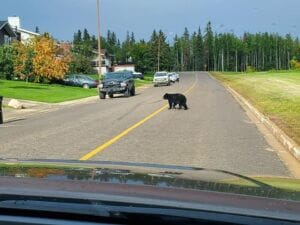
Black Bear Safety While Walking Dogs: How to Protect Yourself and Your Pet
Walking your dog is one of life’s simple pleasures, offering fresh air, exercise, and a chance to connect with nature. However, if you live in, or visit, areas with black bear (Ursus americanus) populations, such as the Wood Buffalo Region in Northern Alberta, these outings require extra precautions to ensure both your safety and that of your furry companion. Understanding black bear behaviour and how to respond during an encounter can help keep you and your dog safe.
While these majestic creatures are generally shy and avoid human contact, encounters can occur if you live in bear territory. Understanding black bear behaviour and following safety protocols can help ensure that your outdoor adventures and dog walks remain safe and enjoyable.
Before delving into safety tips, it’s important to understand the nature of black bears. Unlike their grizzly cousins, black bears are typically less aggressive and more interested in avoiding confrontation. They are omnivores, feeding on a variety of foods ranging from berries and nuts to small mammals and carrion. During the summer and fall, bears are particularly active as they prepare for hibernation, making them more likely to be encountered during this time. They will also consume any food that they find, and once bears learn to associate humans and urban areas with easy high calorie meals, they become food conditioned. Once this happens, it may prevent them from seeking other sources of food they would normally go for.
Most of the bear encounters seen in the Wood Buffalo region of Northern Alberta, are within one or two blocks of a tree line or forested area. They are lured by urban food odours, such as garbage bins, fruit trees, pet food and birdseed. When black bears become habituated to these unnatural food sources in the area, Alberta Fish and Wildlife set out bear traps and relocate them, or in some cases must euthanize them, as some bears will continue to seek out human foods.
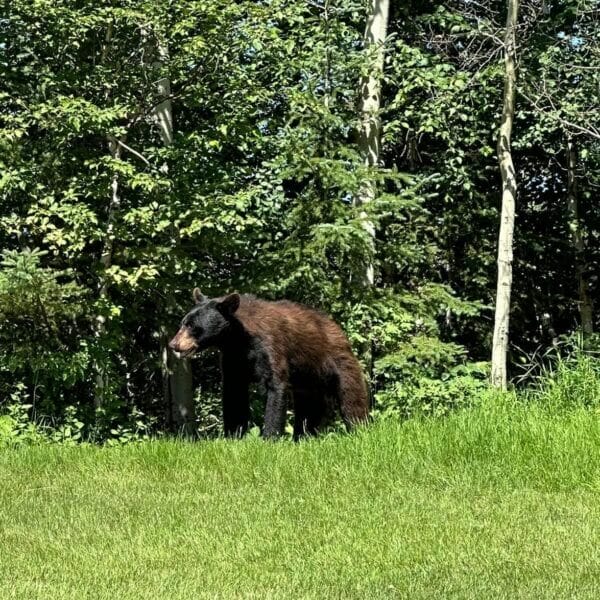

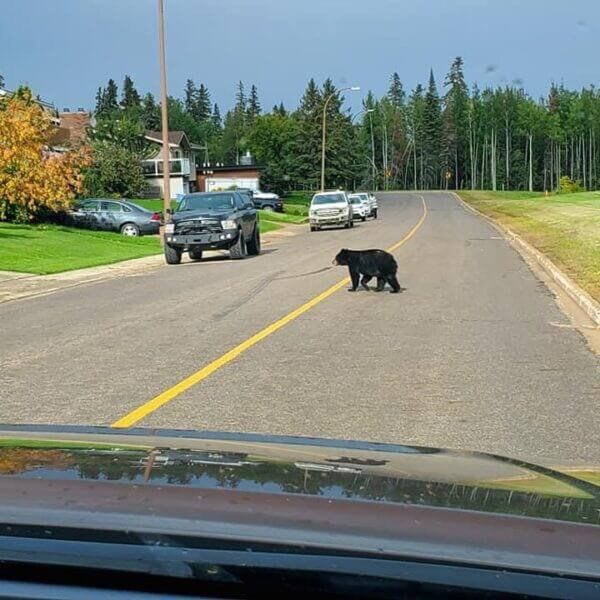
Preventing Bear Encounters
The best way to stay safe around black bears is to prevent encounters in the first place. It’s very important that you Be Bear Aware!! Educate yourself about black bears and their behaviour. Knowing what to expect can help you react appropriately if you encounter one.
Being loud, travelling in groups and making sure your property isn’t attracting bears are all important steps in prevention. Food odours can attract bears so removing or limiting food attractants is key – such as your garbage bin! Get a bear-resistant container or rope tie for your garbage bin, or keep your bin in the garage if possible. Store pet food and bird seed in a locked shed or indoors, remove rotting fruit from your lawn, keep your compost indoors if possible (if outdoors refrain from adding meat, fish and oils). Also, clean your BBQ often. You can also minimize the time your garbage bin is out on the street by placing it out in the morning of garbage collection day instead of overnight when the bears are most active.
Why Are Dogs a Concern Around Black Bears?
Dogs, being naturally curious and territorial, may inadvertently provoke a bear. While black bears typically avoid humans, a dog’s barking, chasing, or sudden movements can trigger a defensive reaction from a bear. This can lead to potentially dangerous situations for both you and your dog.
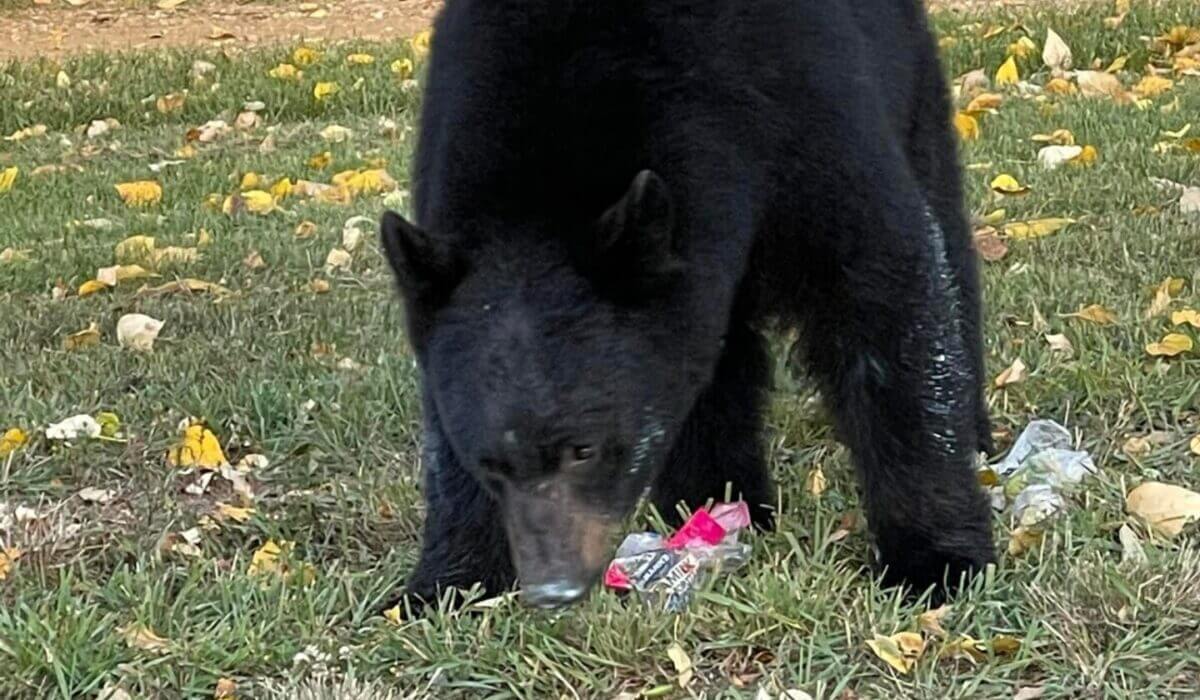
Tips for Staying Safe While Walking Your Dog
1. Know Your Area
Before heading out, be aware of recent bear activity in the area. Local signs and authorities often post warnings if bears have been sighted nearby or are frequent in that area. Keep updated on local reports from your Facebook pages or other news outlets.
2. Choose Your Walking Time Wisely
Bears are most active during dawn and dusk. If possible, plan your dog walks for later in the morning or early afternoon when bears are less likely to be active.
3. Keep Your Dog on a Leash
Always keep your dog on a leash in bear country. A leash prevents your dog from running ahead and potentially encountering a bear out of sight. It also allows you to maintain control and keep your dog close in case of an encounter.

4. Make Noise and Travel in Groups
As you walk, make noise to alert bears to your presence. Talk loudly, sing, or clap your hands, especially when approaching blind spots or dense vegetation. This gives bears a chance to move away before you get too close.
5. AVOID ATTRACTANTS
Don’t bring food or anything with a strong scent that could attract bears. This includes dog treats, which can be tempting for both your dog and nearby bears.
6. Be Aware of Your Surroundings
Keep an eye out for signs of bears, such as scat, tracks, or overturned garbage bins, and don’t wear earbuds or anything else that may interfere with your ability to pay attention to your surroundings. If you see evidence of bear activity, it’s best to leave the area immediately. Remember that they are usually so focused on eating, they may not be diligent in trying to avoid people, or they might be used to humans.
7. Carry Bear Spray or Noisemaker
Bring bear spray, or an air horn with you and ensure they are easily accessible (not in a backpack). Familiarize yourself with how to use your bear spray before you head out, being mindful of wind direction so you don’t inadvertently hurt yourself or your dog. Bear spray is an effective deterrent and can protect you and your dog if a bear gets too close, and a super loud noisemaker can also send a bear running.



What to Do If You Encounter a Black Bear While Walking Your Dog!
1. Stay Calm and Control Your Dog
If you see a bear, stay calm and watch its body language. Avoid yelling or making sudden movements that could alarm the bear. Keep your dog close and quiet; if they are barking, try to calm them down without yelling.
2. Do Not Run
Running can trigger a bear’s predatory instincts. Instead, back away slowly while keeping your eyes on the bear.
3. Identify Yourself
Speak in a calm, firm voice to let the bear know you are human, not a prey animal or a threat. This helps the bear recognize you and may reduce its curiosity. Wave your arms slowly and back away to a place of safety.
4. Use Bear Spray If Necessary
If the bear approaches within 20 meters and does not show signs of retreating, prepare to use your bear spray. Aim for the bear’s face and discharge the spray in a short burst. You may need to spray more than once; be vigilant and do not run or turn your back on the bear when the attack is interrupted by the spray.
5. IF A BEAR CHARGES
Black bears sometimes make bluff charges. If this happens, stand your ground. In most cases, the bear will stop short and retreat. If the bear continues to approach, use your bear spray.
6. Protect Yourself and Your Dog
If the bear attacks, your priority should be to protect yourself. If you can, position your dog behind you and use bear spray or any available objects to defend yourself.
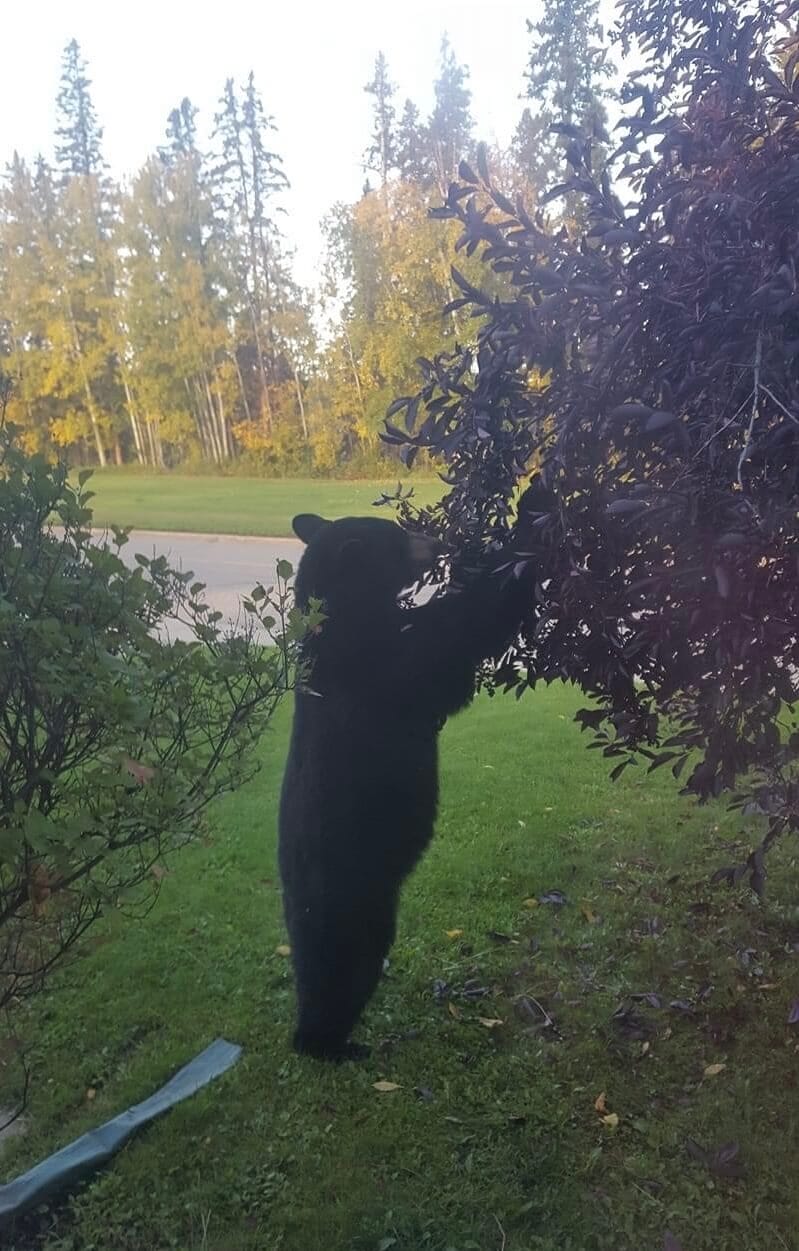
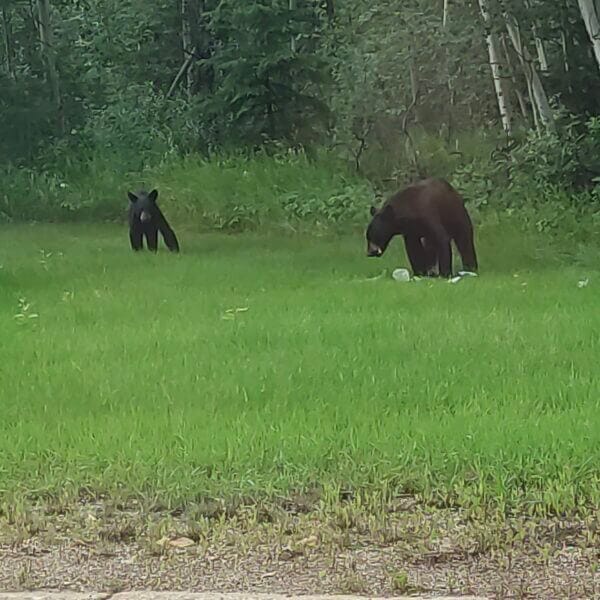
After an Encounter
If you have an encounter with a bear in Alberta, make sure to report it to Alberta Fish & Wildlife. This is especially important if the bear showed aggressive behaviour or appears to be habituated to humans and dogs (shows little or no reaction to people and may frequent human areas)
Alberta Fish Wildlife: 780-743-7200
Report A Poacher Hotline: 1-800-642-3800 (after hours)
Conclusion
Walking your dog in areas where black bears roam requires extra caution, but by following these guidelines, you can significantly reduce the risk of a dangerous encounter. Remember, the key to safety is prevention and preparation. By staying vigilant, keeping your dog under control, and knowing how to react in an encounter, you can enjoy your walks without compromising your safety or that of your pet.

